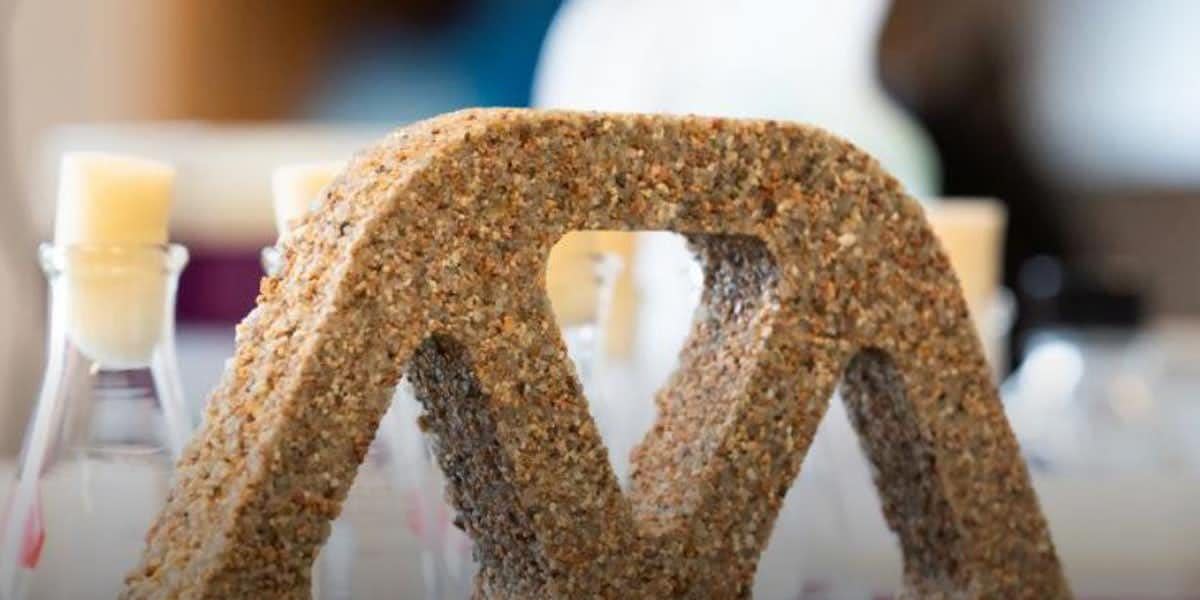Scientists Are Trying to Grow Buildings from Bacteria—and It Just Might Work

Scientists have harnessed productive bacteria to turn sand and gelatin into microconcrete.
Unconventional and cutting-edge biological building materials are a hot research topic.
These materials are modeled on or inspired by organisms like corals that secrete limestone.
Could your next home be built with bacteria? Researchers have spent years experimenting with and cultivating “living materials” for building, and recently, the National Science Foundation endorsed Harvard’s living materials team with an award and a $26,000 grant. “What if buildings—walls, roofs, floors, windows—were actually alive?” the University of Colorado Boulder’s Wil Srubar wonders in a new piece in The Conversation.
There are some different models of how living materials could build a home or at least a shelter. Bacteria naturally generate all kinds of byproducts, and scientists like the ones in Srubar’s department help to tune bacterial genetics until the single-celled organisms can produce materials like limestone or the base for Styrofoam.
Srubar is particularly proud of a recent paper about using cyanobacteria to grow a sand-based building material. One of the goals of that specific format is to try to replace environmentally costly cement and concrete, which together make up one of the biggest shares of carbon usage on Earth.
“Cement and concrete have changed little as technology for more than a century,” Discover wrote, explaining this new paper. “Now scientists are seeking inspiration from natural processes, such as the way colonies of coral polyps build reefs.”

The link is pretty literal: Coral polyps secrete limestone as their protective shells, and this limestone builds over time to form coral structures. Cement is made by pulverizing limestone into powder and then firing the powder in a very hot kiln. Because coral naturally make limestone, they’re an intuitive missing genetic link between productive bacteria and so-called living cement.
In Srubar’s new paper, the mechanism is a little different. By mixing sand and gelatin and adding cyanobacteria, the researchers induce an action where the bacteria process the gelatin and calcify it. This results in a material much more like concrete, which is a heterogeneous mixture of cement and some kind of sediment.

But really, it’s even more like a popular pool and marine surfacing material called Pebblecrete, or epoxy pebble paving. Instead of clear epoxy, the grains of sand are bonded by a very thin coating of gelatin calcified into de facto grout.
The material must be carefully controlled for humidity, which makes sense: They’re using living things, which can’t be fully desiccated or they’ll die, to dry water-soluble gelatin into strong and permanent cement. It’s a fine line, and Srubar told Discover, “We're looking to create a desiccation-tolerant strain of bacteria so that we can get full structural capacity while also enhancing microbial viability in super-dry conditions.”
While it's hard to imagine a bacteria that can live without moisture, most extremophiles that live without oxygen and other “vital” materials are bacteria. And before about 5 minutes ago, you probably weren’t imagining a building material made by feeding gelatin to cyanobacteria packed in sand. The next big thing in living structures could be right around the sandy corner.
You Might Also Like


